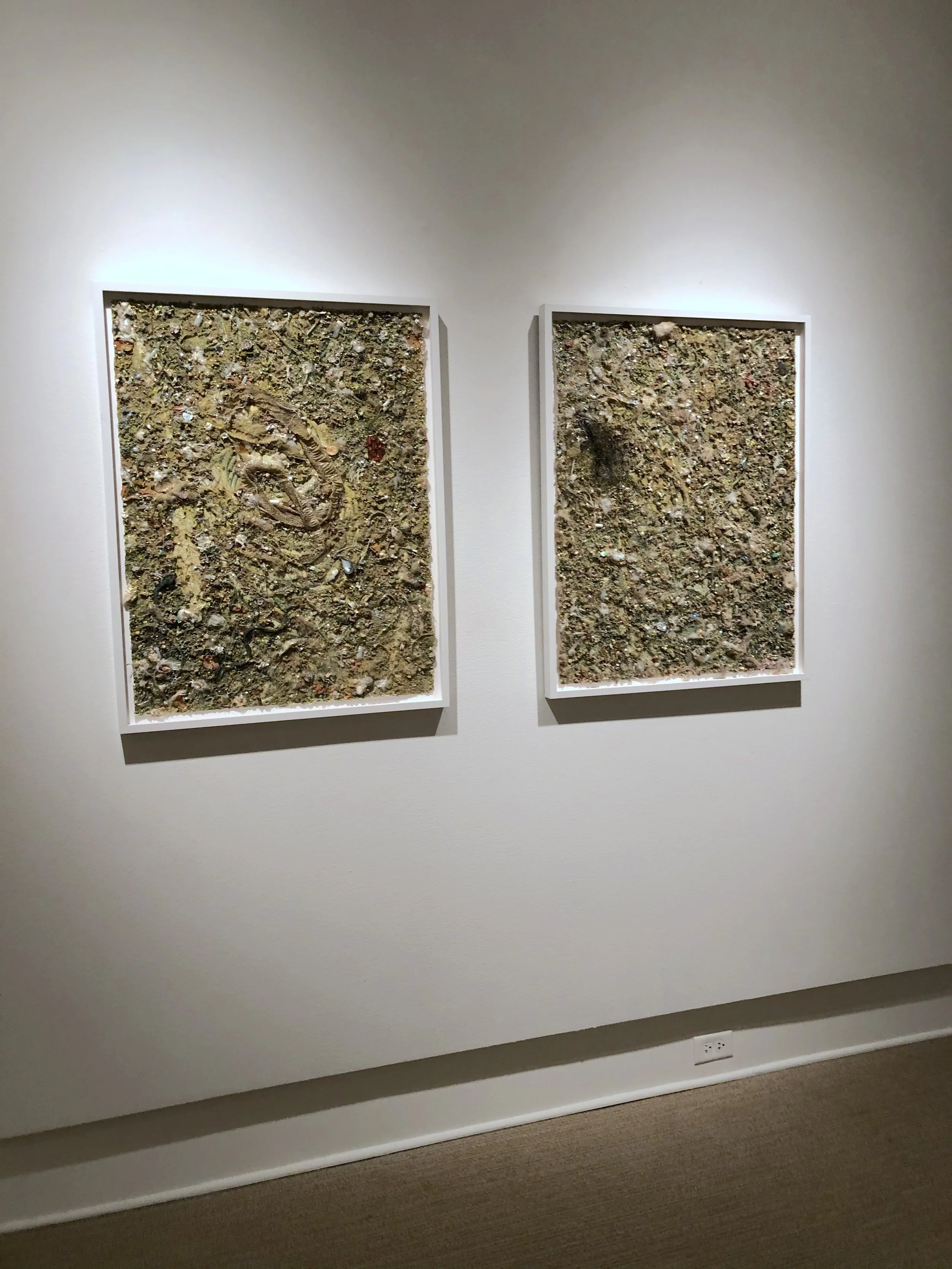

























CEMETERY MUSEUM SOUVENIR emerged out of my first interactions with my current institutional home: Rollins College. When I arrived on campus in Winter Park, FL to start teaching sculpture in the fall of 2020, two collections stood out to me: Hamilton Holt’s Walk of Fame and Charles McCormick Reeves’s Souvenir Canisters. Both of these Rollins collections are comprised of stolen fragments amassed during travel, meant to refer to historical sites, “men of note,” and moments of political and spiritual significance. Their changing roles on campus reveal the shifting ways we talk about collecting and colonialism. I've begun to unpack some of these ideas in writing, public talks, and a curatorial project. This research underpins my artmaking practice and material choices.
The artworks that make up CEMETERY MUSEUM SOUVENIR were produced as two distinct projects in 2021 and 2024. For the 2021 project, I used oil stick on canvas to take rubbings from the stones on the Walk of Fame. I see this process as an automatic form of drawing in the Surrealist tradition, which creates an indexical relationship between textile and stone. The central work in the series CEMETERY MUSEUM SOUVENIR is a double-sided piece of canvas hung from hand-wound rope that combines rubbings taken from the Rollins College Walk of Fame with personal relics and plastic flowers pulled from the trash bins at the rural cemetery near my parents’ home. In 2024 I created a second series of artworks for this series, which was exhibited at the Grammar Center in Orlando. The portal-like works resemble blacked-out church stained glass windows. They incorporate gobs of found materials collected on a pilgrimage along the Camino de Santiago with a personal atlas of protective symbols.
For better or for worse, I believe that the Walk of Fame was created using an idiosyncratic logic familiar to artists—it is a rock collection, a gift, a poem, a personal cosmology. The idea that rocks associated with a man of note might communicate greatness to our student population strikes me as absurd, and yet the belief in objects as portals to meaning persists in my own work. The Walk contains contradictions; it is of dubious moral value, and is pockmarked with theft both for it and from it. I love it.